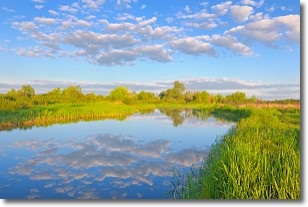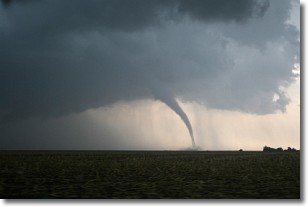Weather Alert in Iowa
Special Weather Statement issued May 9 at 4:46AM CDT by NWS Sioux Falls SD
AREAS AFFECTED: Lyon; Lincoln; Lyon; Murray; Cottonwood; Nobles; Jackson; Pipestone; Rock; Beadle; Kingsbury; Brookings; Jerauld; Sanborn; Miner; Lake; Moody; Brule; Aurora; Davison; Hanson; McCook; Minnehaha; Douglas; Hutchinson; Turner; Lincoln
DESCRIPTION: Warm and very dry conditions are expected this afternoon, with humidity levels as low as 15 to 25 percent. Coupled with breezy west to northwest winds gusting up to 20-25 mph, fire danger conditions may reach near critical levels. Fire danger will be greatest in localized areas where grasses are still receptive to fire starts and spread. Isolated to scattered light showers during the late afternoon and evening will also bring a potential for isolated gusts up to 40 to 50 mph. This could result in erratic fire behavior. Check with local officials before attempting any outdoor burning today.
INSTRUCTION: N/A
Want more detail? Get the Complete 7 Day and Night Detailed Forecast!
Current U.S. National Radar--Current
The Current National Weather Radar is shown below with a UTC Time (subtract 5 hours from UTC to get Eastern Time).

National Weather Forecast--Current
The Current National Weather Forecast and National Weather Map are shown below.

National Weather Forecast for Tomorrow
Tomorrow National Weather Forecast and Tomorrow National Weather Map are show below.

North America Water Vapor (Moisture)
This map shows recent moisture content over North America. Bright and colored areas show high moisture (ie, clouds); brown indicates very little moisture present; black indicates no moisture.

Weather Topic: What are Stratocumulus Clouds?
Home - Education - Cloud Types - Stratocumulus Clouds
 Next Topic: Stratus Clouds
Next Topic: Stratus Clouds
Stratocumulus clouds are similar to altocumulus clouds in their
fluffy appearance, but have a slightly darker shade due to their additional mass.
A good way to distinguish the two cloud types is to hold your hand out and measure
the size of an individual cloud; if it is the size of your thumb it is generally
an altocumulus cloud, if it is the size of your hand it is generally a
stratocumulus cloud.
It is uncommon for stratocumulus clouds to produce precipitation, but if they do
it is usually a light rain or snow.
Next Topic: Stratus Clouds
Weather Topic: What are Wall Clouds?
Home - Education - Cloud Types - Wall Clouds
 Next Topic: Altocumulus Clouds
Next Topic: Altocumulus Clouds
A wall cloud forms underneath the base of a cumulonimbus cloud,
and can be a hotbed for deadly tornadoes.
Wall clouds are formed by air flowing into the cumulonimbus clouds, which can
result in the wall cloud descending from the base of the cumulonimbus cloud, or
rising fractus clouds which join to the base of the storm cloud as the wall cloud
takes shape.
Wall clouds can be very large, and in the Northern Hemisphere they generally
form at the southern edge of cumulonimbus clouds.
Next Topic: Altocumulus Clouds
Current conditions powered by WeatherAPI.com




